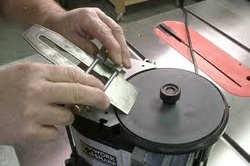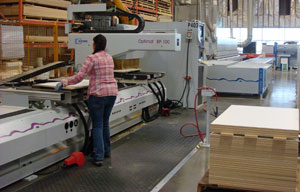Are you curious about the care and maintenance of woodwork machines? Whether you’re an aspiring woodworker or just someone interested in the craft, it’s important to learn how to take care of these valuable tools. Woodwork machines, such as table saws and planers, can last for years with proper care. So let’s dive in and explore some essential tips for keeping your woodwork machines in top shape!
Woodwork machines are like athletes; they need regular attention and care to perform their best. Just like you wouldn’t neglect your own body, you shouldn’t ignore your woodwork machines! By following a few simple maintenance practices, you can extend their lifespan and ensure optimal performance. So let’s roll up our sleeves and discover how to keep your woodwork machines in tip-top condition!
Ready to unleash your inner DIY enthusiast and take on exciting woodwork projects? Before you start, let’s talk about the importance of caring for your woodwork machines. Proper maintenance not only enhances their longevity but also ensures your safety in the workshop. So, let’s delve into the world of woodwork machine care and maintenance, and unlock the key to a smooth, safe, and enjoyable woodworking experience!
- Regularly clean the machines to remove dust and debris
- Check and tighten any loose screws or bolts
- Keep the blades sharp through regular sharpening or replacement
- Apply lubrication to moving parts
- Store the machines in a clean and dry environment
Following these guidelines will help you extend the lifespan of your woodwork machines and ensure smooth and accurate woodworking.

Woodwork Machine Care and Maintenance: Tips for Longevity and Efficiency
Welcome to our comprehensive guide on the care and maintenance of woodwork machines. Whether you’re a professional woodworker or a passionate hobbyist, proper maintenance is essential for ensuring the longevity and efficiency of your woodworking equipment. In this article, we’ll provide you with expert tips, tricks, and insights on how to keep your woodwork machines in top shape, prevent breakdowns, and achieve the best results in your projects. Let’s get started!
1. Regular Cleaning and Dust Removal
One of the most important aspects of caring for your woodwork machines is regular cleaning and dust removal. Wood dust accumulation can not only affect the performance of the machine but also pose a serious health risk. Start by unplugging the machine and using a clean cloth or brush to remove dust and debris from all the surfaces. Pay extra attention to the areas around the blade or cutting mechanism, as these tend to accumulate dust quickly.
For more detailed cleaning, use a vacuum cleaner or compressed air to reach the nooks and crannies of the machine. Ensure that you clean the filters and screens regularly to maintain optimal performance. Additionally, remember to clean the tool attachments, such as blades, bits, and guides, after each use. This will prevent the buildup of residue and ensure smooth operation.
Lastly, don’t forget to clean the work area around the machine. A clean and clutter-free workspace not only enhances safety but also promotes efficiency in your woodworking projects.
2. Lubrication and Inspection
Lubrication is a critical component of woodwork machine maintenance. Consult your machine’s user manual to determine the specific lubrication requirements for each moving part, such as bearings, gears, and slides. Using the recommended lubricants, apply a thin layer to these areas, ensuring smooth operation and minimizing wear and tear.
In addition to regular lubrication, it’s essential to inspect your machine for any signs of damage or wear. Check the belts, chains, and pulleys for proper tension and replace them if necessary. Examine the power cords and switches for any fraying or damage, and replace them immediately if needed. By conducting routine inspections, you’ll be able to identify and address potential issues before they develop into major problems.
Remember to follow all safety precautions and turn off the machine before performing any maintenance or inspection tasks.
3. Calibration and Alignment
Proper calibration and alignment are crucial for achieving accurate and precise cuts in your woodworking projects. Over time, vibrations, usage, and even temperature changes can cause the machine’s alignment to shift, resulting in subpar results. Regularly check and adjust the alignment of the cutting blades or tools as per the manufacturer’s instructions.
Calibration should also include checking and adjusting the machine’s settings, such as the height, depth, and angle adjustments. This will ensure that your cuts are consistent and meet your desired specifications. Take the time to familiarize yourself with the calibration processes for your specific machine, as they may vary between different models and brands.
By maintaining proper calibration and alignment, you’ll be able to achieve cleaner cuts, reduce material waste, and enhance the overall quality of your woodworking projects.
4. Safety Measures and User Training
Prioritizing safety is crucial when it comes to the care and maintenance of woodwork machines. Always follow the manufacturer’s safety guidelines and regulations to prevent accidents and injuries. Ensure that you wear appropriate personal protective equipment (PPE), such as safety glasses, gloves, and hearing protection, when operating the machines.
It’s also essential to receive proper user training to understand the machine’s functionality, safety features, and maintenance requirements. Many woodworking associations and institutions offer training courses and certifications that can help you gain the necessary knowledge and skills to operate and maintain woodwork machines efficiently.
Lastly, create a safe and organized workspace by implementing good housekeeping practices. Keeping the floor clean, providing adequate lighting, and storing tools and materials properly can significantly reduce the risk of accidents and improve overall efficiency.
5. Regular Servicing and Professional Assistance
Although regular maintenance plays a vital role in prolonging the lifespan of your woodwork machines, there may be instances where professional assistance is required. Professional servicing and inspections can help identify any underlying issues and provide necessary repairs or replacements.
Be sure to follow the manufacturer’s recommended maintenance schedule and guidelines. This may include periodic servicing, checking and replacing worn-out parts, and performing more in-depth inspections. By staying proactive and addressing potential issues in a timely manner, you can avoid costly breakdowns and extend the life of your woodwork machines.
When seeking professional assistance, it’s important to choose a qualified and reputable service provider who specializes in woodwork machine maintenance. They should have the necessary expertise, tools, and spare parts to ensure that your machines are serviced properly.
Key Takeaways: Understanding the Care and Maintenance of Woodwork Machines
1. Regularly clean the machines to remove dust and debris buildup.
2. Inspect the machines for any loose or damaged parts and repair or replace them promptly.
3. Lubricate the moving parts of the machines to reduce friction and ensure smooth operation.
4. Follow the manufacturer’s guidelines for proper storage and protection of the machines when not in use.
5. Regularly check and adjust the machine’s settings and calibration to maintain accuracy and precision.
Frequently Asked Questions
Woodwork machines are valuable tools for woodworking projects. To ensure their optimal performance and longevity, proper care and maintenance are essential. Here are five commonly asked questions about the care and maintenance of woodwork machines:
1. How often should I clean my woodwork machine?
It is recommended to clean your woodwork machine after each use or at least once a week, depending on frequency of use. Dust and debris can accumulate on the machine, affecting its performance and accuracy. Use a soft brush or vacuum to remove the dust from all the nooks and crannies. If there are any stubborn spots, dampen a cloth with mild soap and water and gently wipe them clean. Ensure the machine is completely dry before using it again.
Regular cleaning not only enhances the efficiency of the machine but also prolongs its lifespan. It prevents the buildup of dirt and debris that can cause clogs, rust, or damage to delicate components. By maintaining a clean woodwork machine, you’ll achieve better results in your woodworking projects and avoid any unnecessary repairs or replacements.
2. How do I lubricate my woodwork machine?
Lubrication is crucial for the smooth operation of your woodwork machine. Refer to the manufacturer’s instructions for the recommended lubrication points and schedule. Typically, you’ll need to apply oil or grease to the moving parts, such as the gears, bearings, and sliding components. Use the appropriate lubricant recommended by the manufacturer.
Make sure to clean the surfaces before applying any lubricant. Apply a small amount of oil or grease to the specified areas, ensuring not to over-lubricate. Too much lubrication can attract dust and debris, leading to clogs and potential damage. Regularly lubricating your woodwork machine will reduce friction, prevent wear and tear, and ensure smooth, accurate operation.
3. What should I do if my woodwork machine starts making unusual noises?
If your woodwork machine starts producing strange noises, it is important not to ignore them. Unusual noises can indicate a problem with the machine that needs attention. First, check if there are any loose or damaged parts. Tighten any loose screws or bolts and replace any damaged components.
If the noise persists, consider consulting the manufacturer’s manual or contacting a professional for further advice. It is crucial to address the issue promptly to prevent further damage or potential safety hazards. Regular maintenance and inspections can help identify and resolve problems before they escalate.
4. How can I prevent rust on my woodwork machine?
Rust can degrade the performance and appearance of your woodwork machine. To prevent rust, keep your machine in a dry and well-ventilated area. Avoid exposing it to moisture or excess humidity. After each use, wipe down the surfaces with a clean cloth to remove any moisture or sweat.
Additionally, consider applying a thin coat of rust-inhibiting oil or wax to vulnerable areas, especially if you live in a humid climate. This extra layer of protection will help repel moisture and prevent the formation of rust. Regularly inspect your machine for any signs of rust and address them immediately. By implementing these preventive measures, you can extend the lifespan of your woodwork machine and maintain its performance.
5. Is it necessary to have my woodwork machine professionally serviced?
While regular cleaning and maintenance can go a long way in keeping your woodwork machine in good condition, professional servicing is recommended for optimal performance and safety. Professional technicians have the expertise to identify and address any underlying issues that may not be evident to untrained eyes.
A professional service may involve thorough cleaning, calibration, lubrication, and inspection of critical components. They can also detect any worn-out parts and replace them as necessary. Regular professional servicing ensures that your woodwork machine is in top shape, minimizing the risk of accidents and breakdowns during woodworking projects. It is a worthwhile investment to ensure the longevity and reliability of your machine.

Summary
Taking care of woodwork machines is important to keep them safe and working well. Here’s what you need to do:
First, clean the machines regularly and remove any dust or debris. This helps prevent damage and keeps them running smoothly. Second, lubricate the moving parts with oil or grease to reduce friction and extend their lifespan. Finally, make sure to inspect the machines for any signs of wear or damage, and get them repaired if needed. By following these steps, you can ensure that your woodwork machines last longer and work efficiently.
